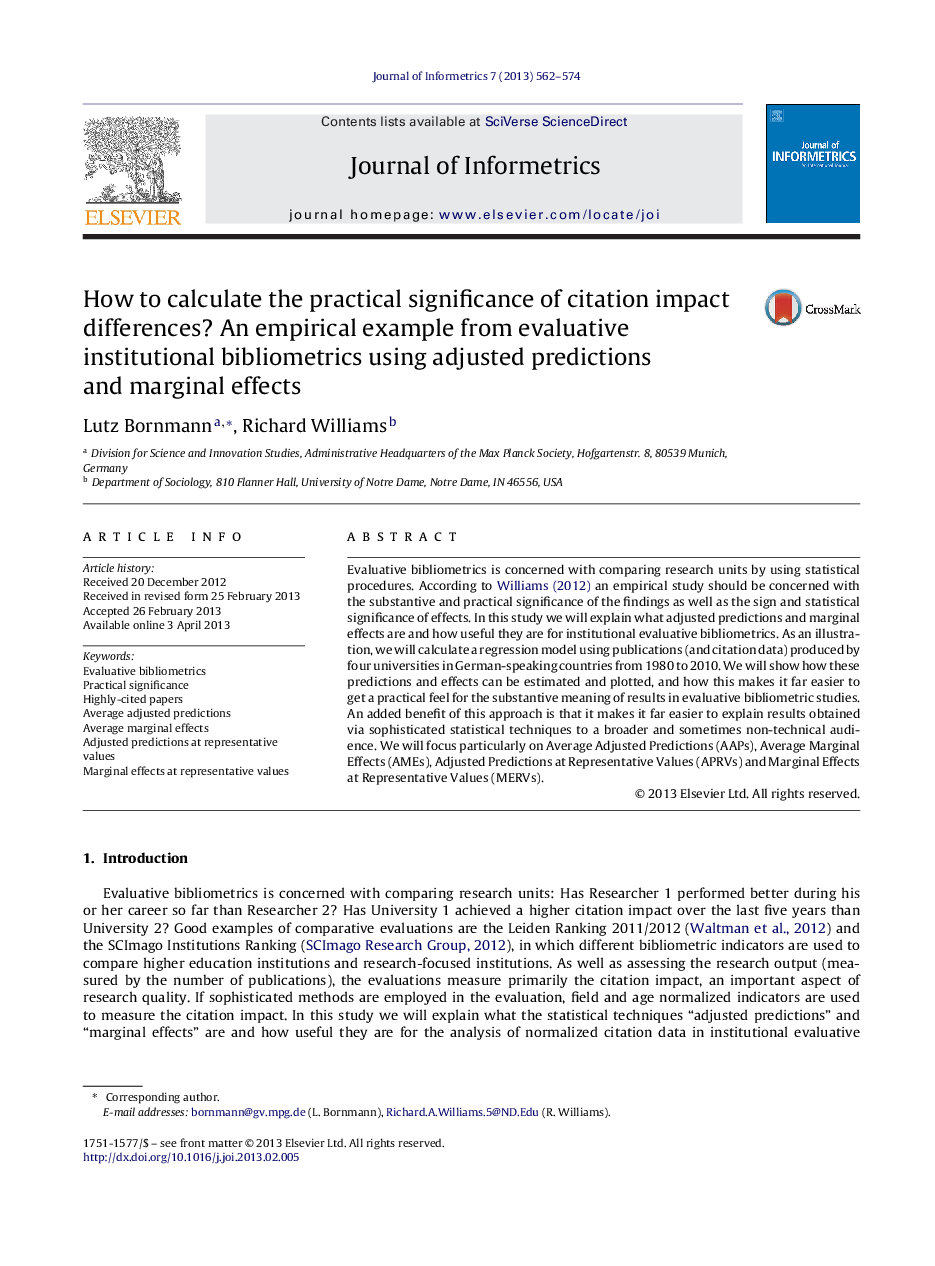| Article ID | Journal | Published Year | Pages | File Type |
|---|---|---|---|---|
| 523252 | Journal of Informetrics | 2013 | 13 Pages |
•A study should be concerned with the practical as well as the statistical significance.•We explain what adjusted predictions and marginal effects are.•We describe how useful adjusted predictions and marginal effects are.•We use bibliometric data produced by four universities from 1980 to 2010.
Evaluative bibliometrics is concerned with comparing research units by using statistical procedures. According to Williams (2012) an empirical study should be concerned with the substantive and practical significance of the findings as well as the sign and statistical significance of effects. In this study we will explain what adjusted predictions and marginal effects are and how useful they are for institutional evaluative bibliometrics. As an illustration, we will calculate a regression model using publications (and citation data) produced by four universities in German-speaking countries from 1980 to 2010. We will show how these predictions and effects can be estimated and plotted, and how this makes it far easier to get a practical feel for the substantive meaning of results in evaluative bibliometric studies. An added benefit of this approach is that it makes it far easier to explain results obtained via sophisticated statistical techniques to a broader and sometimes non-technical audience. We will focus particularly on Average Adjusted Predictions (AAPs), Average Marginal Effects (AMEs), Adjusted Predictions at Representative Values (APRVs) and Marginal Effects at Representative Values (MERVs).
Graphical abstractFigure optionsDownload full-size imageDownload as PowerPoint slide
